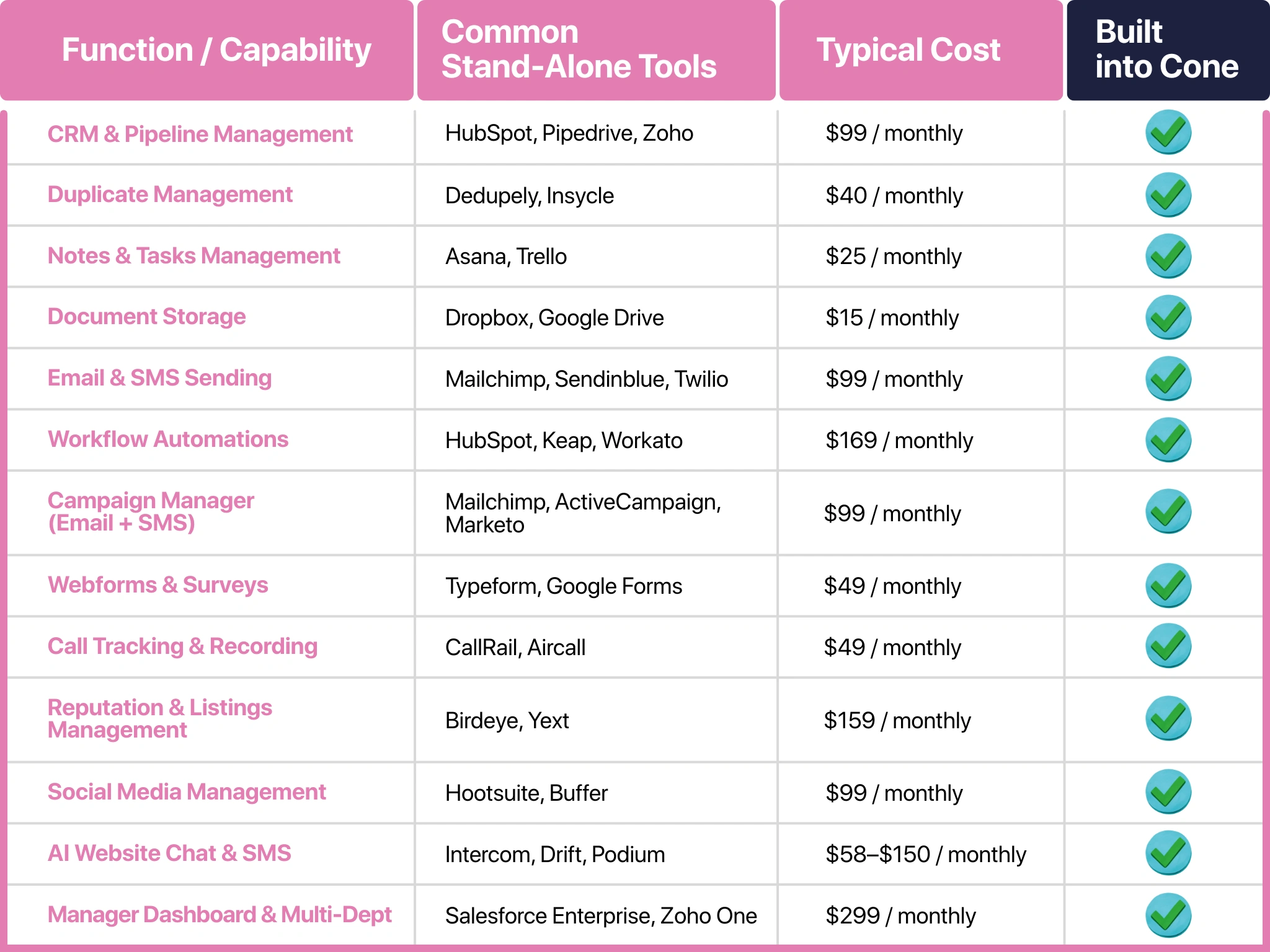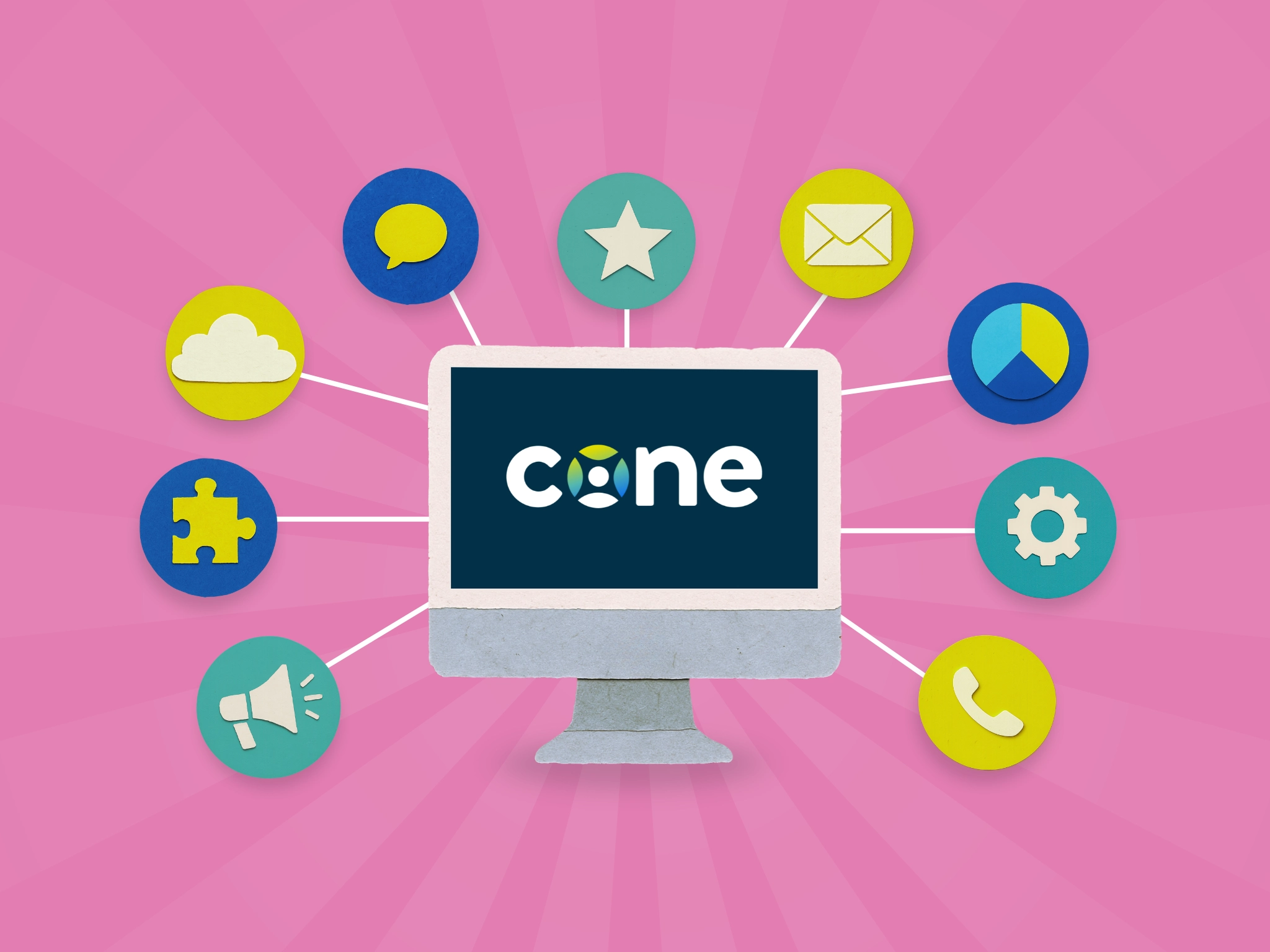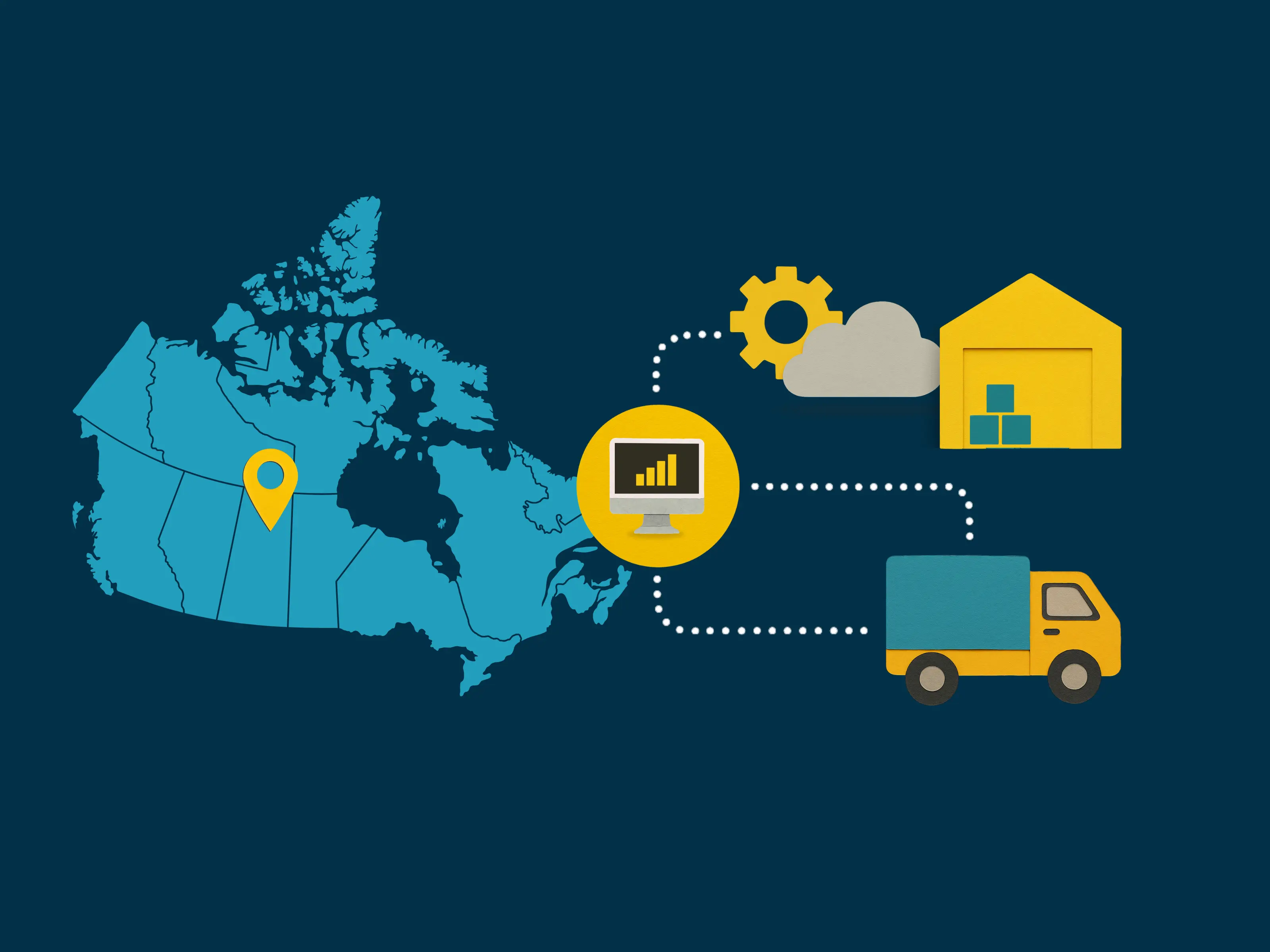Unlock $1,000+ in Business Tools Savings with Cone’s All-in-One CRM Platform
Running a small or medium business means juggling many apps: one for emails, one for your pipeline, one for surveys, one for social posts scheduling, and the list goes on. Individually, many seem affordable, but cumulatively, they kill your margins and your team’s sanity.
Take a typical stack:

*These are illustrative averages; your real numbers may vary depending on size, usage, add-ons, and tiers.
Add them all up, and many SMBs are spending $1,000–$1,500+ per month on software subscriptions alone. And that’s before factoring integration costs, training, data wrangling, and tool overlap.
Why this matters:
- Every disconnected system is a friction point: data doesn’t flow automatically, updates don’t sync, workflows break. (Source)
- Hidden upgrade, API, and integration fees often push you over the “list price.” (Source)
- Your team wastes time toggling platforms, copy/pasting, doing manual reconciliation. That’s wasted opportunity.
Why “All-in-One” Delivers Beyond Just Savings
Switching to a unified platform isn’t just about cutting costs. The real benefits are about adoption, efficiency, clarity, and leverage.
- Higher Adoption = Real ROI
Even the best tools are useless if nobody uses them. With a single platform, your team doesn’t have to memorize logins, jump between dashboards, or reconcile data manually. It’s frictionless, and adoption skyrockets.
- Fewer Silos, Better Data
Because all your modules live together, your CRM, marketing, reputation, calls, and analytics share the same data layer. No sync lags. No errors. No “did I send that email or not?” mysteries.
- True Automation, End-to-End
Lead comes in through webform → new contact in CRM triggers → emails → lead scoring → assign to rep → follow-up SMS or call. All without jumping between apps. This is the magic of combining CRM + marketing automation in one platform.
- Efficiency Gains, Time Back
With fewer manual handoffs and data work, teams report saving 2–4 hours per day just in back-office work. Use that time for strategy, relationships, closing deals.
- Central Analytics & Insight
Instead of hunting across 5 dashboards, leaders and managers see a unified view of pipelines, campaigns, calls, ROI, all in one place. No guesswork.
- Predictive Intelligence & Scaling
As you grow, having everything in one system gives you leverage. AI recommending next steps, cross-module triggers, forecasting, and scaling workflows all work better when your data isn’t fragmented.
The ROI is real, measurable, and compounding.
- Studies show 30%+ of sales-related tasks can be automated when your tools are properly integrated.
- Marketing automation adoption continues growing as marketers continue to increase budgets.
- In integrated systems, businesses report better lead conversion, productivity, and cost efficiency.
- In Nimble’s example, they claimed savings of over 90% compared to using a fragmented toolset for a 5-person team.
- CRM statistics in 2025 show that even though CRM is widespread, many teams fail to get value because of low adoption and data fragmentation.
How Cone Unifies Your Stack
Here’s how Cone turns this value proposition into reality:
- Modular but unified
You can turn modules on/off per your need (CRM, automation, reputation, etc.), but they all live in the same system, talking to the same data.
- Pre-built connectors
No more Zapier gymnastics. Cone has built integrations so you don’t have to build them yourself.
- AI + smart trigger engine
Automated workflows can fire across modules: when a status changes, trigger an email; when a new webform response comes in, notify the sales rep. Smart logic built in.
- Built-in analytics & dashboards
You get dashboards out-of-the-box that span leads, campaigns, deals, calls, and reputation. No stitching dashboards together.
- User-centric, not tech-first
The UX is designed for teams that don’t want to become “software admins.” Clean, intuitive, and minimal friction.
Getting From Your Stack → Cone
Here’s a mini roadmap you (or we) can follow:
- Audit your stack: itemize every tool you pay for, usage frequency, overlap, and integration complexity.
- Map your workflows: from inbound lead capture → nurturing → deal close → reputation & follow-up. Highlight handoff points.
- Prioritize module migration: Maybe first replace CRM + automation, then reputation, then social, then call-tracking.
- Migrate data methodically: dedupe, clean, standardize before import.
- Train & onboard team: adopt early wins (e.g. immediate follow-up automation) to build momentum.
- Monitor & optimize: analyze what’s working, stop what isn’t, expand on short but ongoing trainings and touch points.
Why This is a Make-or-Break for SMB Growth
SMBs don’t have unlimited budgets or teams. Every expense must pay its way. And every process must scale easily. That’s why:
- Budget matters — Monthly savings free up budget for sales, hiring, or product development.
- Efficiency matters — Sales teams need to focus on customers, not admin.
- Adoption matters — Tools don’t matter if people don’t use them.
- Scaling matters — As you grow, switching systems is brutal. It’s far easier to scale forward than to rebuild later.
With Cone, you’re not just avoiding waste — you’re investing in a stack that pays you back in clarity, time, and momentum.
FAQ
Q1. How much can SMBs actually save by consolidating tools with Cone?
Most teams recoup $1,000–$1,500+ per month by retiring overlapping CRM, email/SMS, marketing, calling, reputation, and reporting subscriptions—plus fewer integration fees and admin hours.
Q2. Why is consolidation make-or-break for SMB growth?
Because budgets and headcount are limited. Consolidation frees cash, reduces admin, improves adoption, and scales without re-platforming later.
Q3. What makes an all-in-one platform more than “just savings”?
Higher adoption, cleaner data, true end-to-end automation, unified analytics, and better AI recommendations—all from a single data layer.
Q4. Will my reps actually use Cone?
Yes. Cone is user-centric (fewer clicks, one login, micro-training). Lower friction → higher usage → real ROI.
Q5. Can we keep some tools and still use Cone?
Absolutely. Cone is modular. Start with CRM + automation, then phase in reputation, calling, social, or dashboards.
Q6. How hard is migration?
We use a staged plan: audit → map workflows → prioritize modules → clean/dedupe → import → launch quick-win automations → measure and expand.
Q7. How does Cone unify data across modules?
All modules share one data layer, with pre-built connectors and cross-module triggers.
Q8. What automations do teams typically start with?
Lead capture → nurture → score → auto-assign → follow-up via SMS/call; alerts to reps; pipeline SLAs and task nudges.
Q9. What KPIs prove the switch worked?
Reduced software spend, login/adoption rates, faster lead-to-close, on-time follow-ups, campaign + pipeline ROI, and fewer manual touches.
Q10. Does Cone help forecasting and exec visibility?
Yes—central dashboards unify pipeline, campaigns, calls, reputation, and revenue so leaders get one truth.
Q11. Is Cone right for non-technical teams?
Yes. Cone is built for operators and sellers, not admins, with clean UX, guided setup, minimal clicks.
Q12. What’s the next step if we want to see savings fast?
Book a preview. We’ll audit your stack and show a path to reclaim current business tool costs, and improve adoption in weeks.







.png)